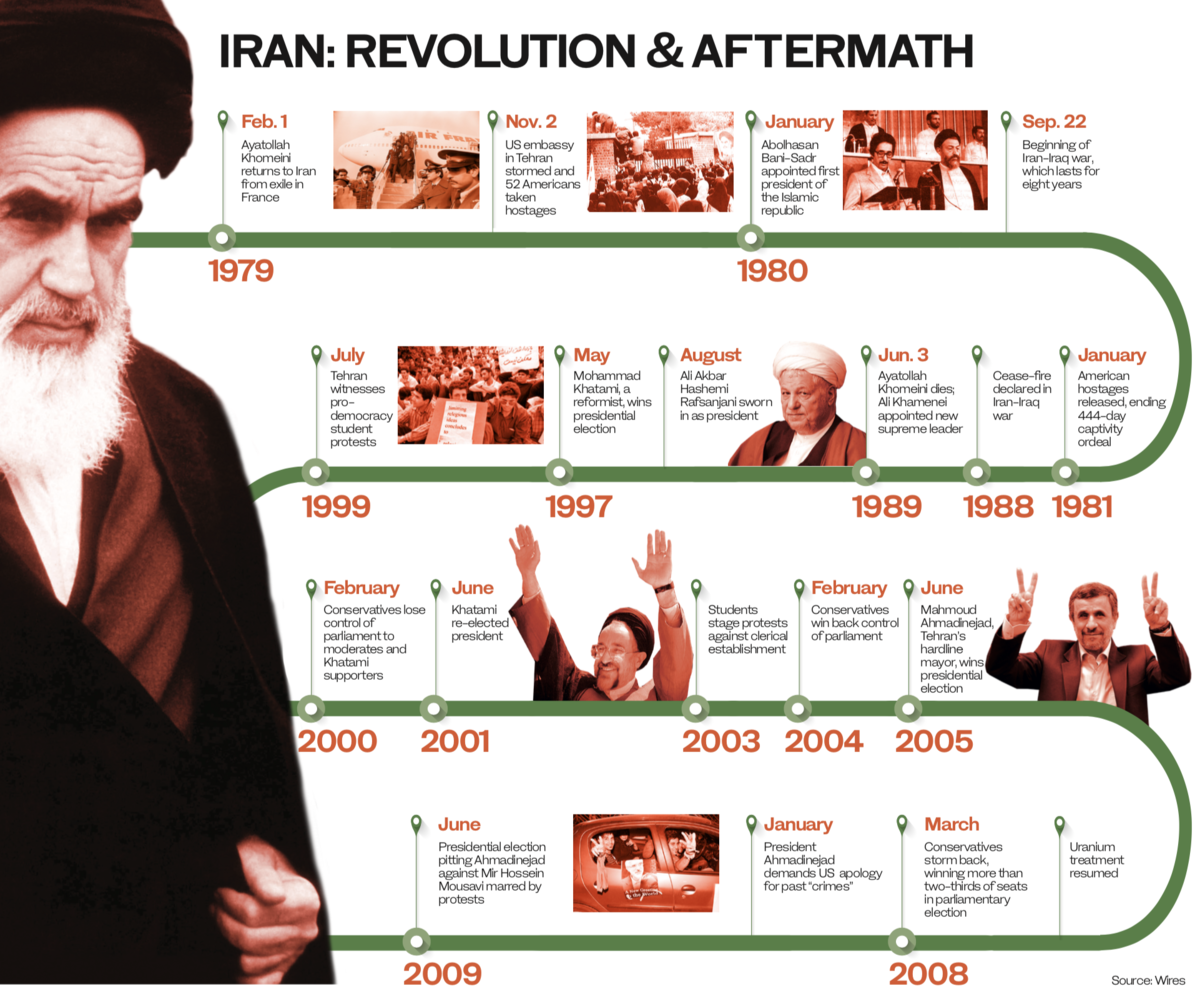Why Iran’s ‘Awakening’ created a nightmare for the Gulf
To weigh the consequences of the Iranian revolution on the Gulf region, one needs to investigate Iran’s relations with its Arab neighbors before the overthrow, specifically during the second era of the Pahlavi dynasty in the 1960s and 1970s when some Gulf states gained independence from Britain.
While relations in that period were not as amicable as some suggest, they were certainly not as bleak as they have been since 1979.
During this era, there was political and national rivalry as well as differences of opinion between Iran and its Arab neighbors, such as over the Arab identity of Bahrain, and the three Emirati islands.
These disagreements extended to the subject of relations with Israel, especially during the Arab-Israeli wars. However, all these differences were resolved through direct diplomatic channels and handled within a political framework, separately from any other factors.
Beneath the religious extremist exterior, however, the primary force driving this expansionism is colonialist anti-Arab Persian ethno-nationalism, which twists history and geography, as well as dehumanizing and demonizing Arabs as culturally and racially inferior, as a way of justifying Iran’s conquests.
Dr. Mohammed Al-Sulami
After the 1979 revolution, there was initial optimism among Arab states since many believed that Iran’s new political system would consolidate relations, given the slogans of unity that the revolutionaries had used. However, within two years this optimism had faded. The regime’s policies in the region proved to be a far greater threat to Arab national security than those of any of Iran’s previous leaders. The hard-line theocratic regime brought unwelcome factors to the fore and has tried tirelessly to exploit them ever since.
Political Islam was given the limelight as a result of the revolution, with religion being manipulated to serve political objectives and initiatives. The new ruling elites in Iran, especially the most senior figures, were inspired to a large extent by the Muslim Brotherhood in Egypt and worked for decades to build bridges with the movement. The Muslim Brotherhood also promoted its political platform among Iranians through translated works, with Iranian regime figures citing many of its political slogans.
After 1979, supporters of political Islam in Arab countries felt jealous of their peers in Iran who had climbed to the highest positions of power.
As a result, they worked on implementing a similar project in Arab countries to change the political systems and to install new governments that would maintain harmony with Iran’s “revolutionary” theocracy. As a result, their media rhetoric, like Iran, focused on denouncing global imperialism and the West, with the aim of wooing the masses and impassioned young people.
This fusion of political Islam with revolutionary tendencies gave rise to unwelcome developments in Arab society. The first of these was the attempt by a politically and religiously motivated extremist group led by the unpopular Juhayman Al-Otaibi to seize control of the Grand Mosque in Makkah in 1979. The link between this incident and developments in Iran at the time shows how religious devotion was exploited for political ends.
Before the 1979 revolution, sectarianism was not an issue in Gulf communities, all of which have a mixture of sects, and there were no transnational tensions or problems of a sectarian nature. All that changed after 1979, with sectarian conflicts and factional standoffs becoming a hallmark of many regional societies where Sunnis and Shiite had coexisted harmoniously for centuries, particularly in societies such as Syria and Iraq that were prone to instability due to sectarian faultlines.
An inevitable consequence of sectarianism was the rise of terrorism and the formation of terror cells along sectarian lines. Since the beginning of the 1980s, the Iranian regime has worked to support and establish extremist militias, such as Hezbollah in Lebanon, Hezbollah Al-Hejaz in Saudi Arabia, and Hezbollah in Bahrain, as well as the Zainabiyoun Brigade, the Afghan Fatemiyoun Brigade, the Popular Mobilization Units in Iraq and the global Shiite army.
In an October 1979 report issued by the CIA’s Near East Department, analysts stressed that Iran’s regime was working to recruit Shiite minorities in predominantly Sunni Arab countries to serve Iran’s objective of undermining the security and stability of its neighbors.
While the Tehran regime focused its efforts initially on Shiite minorities in Bahrain and Kuwait, it later expanded this policy across the region to devastating effect.
 The formation of such organizations had a significant impact on some young people in the Arab region, with many joining various Tehran-backed organizations during the phase known as the “Awakening,” or what the regime still praises, even now, as the “Islamic Awakening.”
The formation of such organizations had a significant impact on some young people in the Arab region, with many joining various Tehran-backed organizations during the phase known as the “Awakening,” or what the regime still praises, even now, as the “Islamic Awakening.”
While it is true that the war in Afghanistan contributed to the emergence of this “Awakening,” the roots of this phenomena and the excessive religious zeal that the Iranian regime attempted to foment and exploit were connected with the Iranian revolution and the Muslim Brotherhood under the umbrella of political Islam.
The Iranian regime continues to use similar tools in its expansionist drive to “export the revolution.” Beneath the religious extremist exterior, however, the primary force driving this expansionism is colonialist anti-Arab Persian ethno-nationalism, which twists history and geography, as well as dehumanizing and demonizing Arabs as culturally and racially inferior, as a way of justifying Iran’s conquests.
Unfortunately, the regime’s success in recent years is encouraging its efforts to occupy much of the region through military force, and by using these “soft” and “hard power” approaches.
• Dr. Mohammed Al-Sulami is an expert in Iranian affairs. He received his Ph.D. from Leiden University in 2014. He is the founder and chairman of Rasanah: International Institute for Iranian Studies. Twitter: @mohalsulami









































